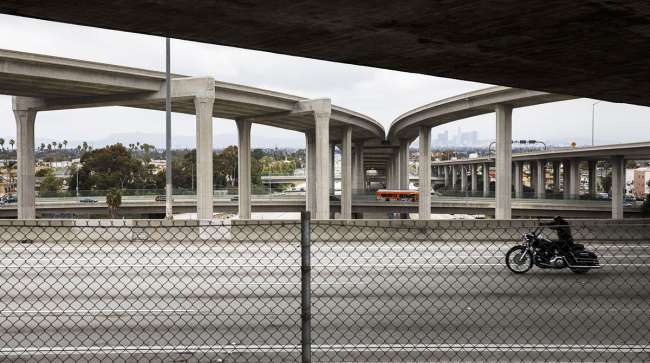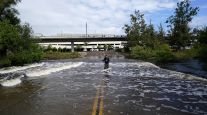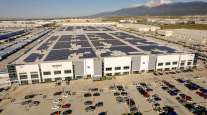Staff Reporter
California Commission Approves $2 Billion in Infrastructure Projects

[Stay on top of transportation news: Get TTNews in your inbox.]
The California Transportation Commission has approved $2 billion for 56 new projects, some of which aim to improve the movement of goods and reduce congestion.
These projects are supported by three programs that were created by the Road Repair and Accountability Act of 2017. The legislation, also known as Senate Bill 1, raised the tax for diesel by 20 cents to 36 cents per gallon and for gasoline by 12 cents to 41.7 cents per gallon.
The commission’s scope of funding responsibility covers highway, rail, transit, bicycle and pedestrian infrastructure needs.

Norton
“These projects are going to benefit California in multiple important ways,” said Commission Chairman Hilary Norton. “This will be a game changer for transportation in California, especially as the state moves toward making travel on all of these modes cleaner.”
One of the projects recommended through the Trade Corridor Enhancement Program involves adding a truck climbing lane to a portion of Interstate 10 in Yucaipa. The Trade Corridor Enhancement Program funds infrastructure improvements on corridors that have a high volume of freight movement.
This segment of I-10 in Yucaipa — about 20 miles east of San Bernardino — carries 120,000 vehicles per day, including more than 19,000 trucks.
At the border, the Trade Corridor Enhancement Program is supporting a bridge-widening project at the Calexico East Land Port of Entry, which links Imperial County, Calif., to Mexicali. The bridge will be widened to add two northbound truck lanes and two northbound passenger vehicle lanes, enabling truckers and other motorists to access inspection booths more quickly.
How did turkey-to-table change this year? What obstacles were suppliers going through to get turkeys to grocery stores? Join us as we talk with J.J. Smith, President of Valley Proteins, about how staying open-minded and flexible helped his business of delivering turkeys persevere. Hear a snippet, above, and get the full program by going to RoadSigns.TTNews.com.
The Solutions for Congested Corridors Program will support a project to establish express lanes on I-105 in Los Angeles. The program’s purpose is to reduce congestion in the state through transportation, environmental and community access improvements.
Spanning fewer than 20 miles, I-105 runs from state Route 1 near Los Angeles International Airport to I-605. Specifically, the project will involve converting an existing high-occupancy vehicle lane into a high-occupancy toll lane and striping to accommodate a second high-occupancy toll lane. The project will cover 16.1 miles of the route and is projected to increase vehicle throughput in the high-occupancy toll lanes by 71%.
Projects supported by the Local Partnership Program include the I Street Bridge replacement in Sacramento and the reconstruction of Mill Street in Point Arena, which is located in Mendocino County. The Mill Street project will involve replacing sidewalk and asphalt as well as installing sub-surface drainage facilities. The Local Partnership Program provides funding to counties, cities and districts in which voters have approved fees or taxes dedicated solely to transportation improvements.
Stop by @TheCityofSac City Hall and check out the model of the final design of the new I Street Bridge Replacement Project! pic.twitter.com/gxUFQiYlNB — SacCityPublicWorks (@CityofSacPW) February 25, 2020
Approximately 60% of the approved funding represents projects located in Southern California, with the other 40% supporting projects in Northern California. The California Transportation Commission received 130 applications requesting a total of $3.7 billion, which is almost twice the amount of funding that’s available.
“From an economic perspective, [these projects] will move people and goods more efficiently while creating over 100,000 jobs during one of the most difficult periods in our state’s history,” Norton said. “From a climate perspective, they will move us toward a more interconnected and multimodal transportation system that reduces greenhouse gas emissions by getting more people to take transit, walk or bike.”
Want more news? Listen to today's daily briefing:
Subscribe: Apple Podcasts | Spotify | Amazon Alexa | Google Assistant | More





